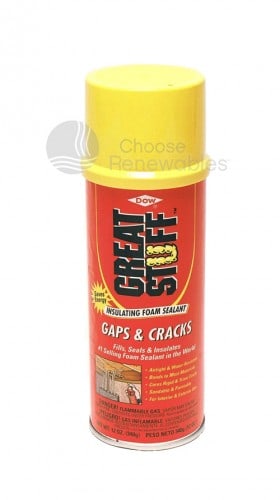Bad is maybe a loaded word. But don’t use TigerFoam, HandiFoam, and
all other 2-part builder-applied foams. Also, don’t use contractors who
use Dow FrothPak, which is the same type of foam but in addition to
small builder packages is sometimes blown from trucks in large volumes.
All these use refrigerants as blowing agents. They release 7-15 lbs of
refrigerants (typically HFC’s) for each 600 sf (board foot) package.
The Global Warming Potential (CO2 equivalency) of these refrigerants is
around 1500-2000, which means that those (nominal) 10 lbs are equivalent
to about 7-10 TONS of CO2 release. That will counteract at least the
majority of your CO2 reductions resulting from better insulating.
This is a scandal that needs to be exposed. Until/unless we regulate
carbon emissions, there are no regulatory tools to apply (the
manufacturers changed from CFC’s and HCFC’s as blowing agents to avoid
Ozone/Montreal Protocol problems).
As green contractors in Brooklyn we regularly research the green building
claims of companies that supply us with green building products. We find that
a lot of our time is used in researching insulation since it is key to any good green
brownstone renovation.
So what foams should you use?
“Good” PU foams are blown using a proportioner with heated hoses in a
truck, and water is the blowing agent. Even the little one-part PU foam
cans from Home Depot, etc, are powered by isobutane or other simple
hydrocarbons with relatively low GWP.
There are some substantial differences between the various SFP products.
Particularly, and never acknowledged by these companies, the consumer
2-part kits have horrendous greenhouse-gas-equivalent implications.
Specifically, these kits are “blown” with refrigerants that are mixed
into each of the 2 parts, typically R-134.
Compared to most uses of refrigerants (air conditioners, refrigerators,
heat pumps), this is a VERY DIFFERENT kind of use. Never mind the
occasional leak in an AC system, these refrigerants are expected to be
expelled into the atmosphere 100% during the normal use of the product.
An average size “builder’s kit” of 2-part foam might provide 600 board
feet. This requires about 5 gallons each of parts A and B. Due to the
trade secrecy firms invoke to avoid stating problematic ingredients, it
is difficult to determine how much R134a is in that 10 gallons, but it
would appear to be between about 7 and 20 lbs.
The Global Warming Potential of R-134a is 1300, so that 7 lbs is equivalent to
approximately 9000 lbs of CO2 emissions. Which is nearly half of the
per-capita total CO2 emissions for an American citizen. And to be
clear: 600 bf doesn’t nearly insulate a house, though in general people
do not use these kits to do an entire house, just spot sealing.
The exception to this last point is the Dow Froth Pak, which is available
up to 300 gallon tanks, enabling people to get into the spray polyurethane
foam business without plunking down $20k+ on a proportioner.
Hopefully if you’ve followed this far, you can see where this is going.
As a side note, the small cans in Home Depot are very different: they
are single-part, and blown by propane or isobutane (GWP = 1), so their
global warming contribution is negligible.

Estimates of R-134a were culled from Material Safety Data Sheets, with
some interpolation and extrapolation necessary. Text by Keith Winston.
